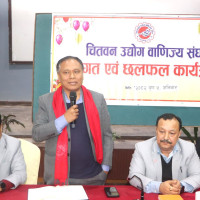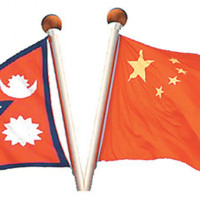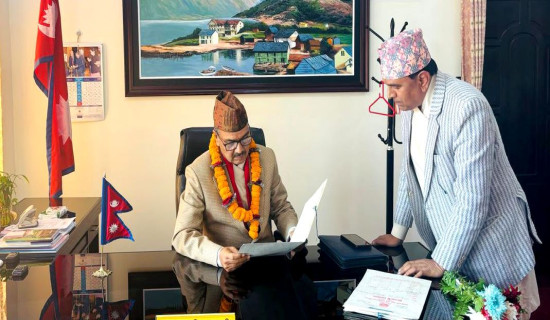- Sunday, 21 December 2025
Turmoil And Power Shift In Gorkha Kingdom
The year was 1846 AD, and the Gorkha Kingdom was in a mess. The government was run by four Kazis, namely Gagan Singh, Chautaria Fateh Jung Shah, Abhiman Singh Rana, and Jung Bahadur Kunwar. The King Rajendra Bir Bikram Shah was 34 years old and had signed a document handing over the power to run the country to his Junior Queen Rajyalaxmi, who preferred Gagan Singh and wanted her son Ranendra Bir Bikram Shah to be placed on the throne, superseding the incumbent Crown Prince Surendra Bir Bikram. While she had the full support of Gagan Singh, Jung Bahadur was not in favour of a change in the royal hierarchy. He, of course, did not give a direct no, which led the Queen to believe that he supported her. Then, on September 14, 1846, Gagan Singh was assassinated, and the result was a massacre in Kote ordered by the Queen and organised by Jung Bahadur.
Inside Kote
The situation that night, September 14, 1846, in Kote was changing by the minute. While everyone had a sword, which was part of the court dress, Jung Bahadur's six brothers and the loyal army officers had firearms as well, which gave them a definite edge over their rivals. General Abhiman Singh Rana had requested the king not to go to the Kote at this hour, but the king refused. He was immediately ushered in with his retinue of guards and servants. Only Abhiman Singh was allowed in, and his soldiers were held outside.
The first thing the King inquired about was the reason for the absence of Fateh Jung Chautaria, to which he did not get a proper reply. Fateh Jung, in the meantime, was in discussion with his brothers and sons at his home in Hiti as to what the plan would be, as he had made up his mind not to go, being suspicious of Bom Bahadur, who had been sent to summon him at Kote at the Queen's order at an unearthly hour. King Rajendra then decided that he would go to summon the Chautaria and leave in his palanquin. His entire retinue of guards and servants was held inside on Jung Bahadur's order, and only the King was allowed out.
Lady Luck seemed to have deserted the 34-year-old king, who alone trudged to call his prime minister in a palanquin on that dark, moonless night, arriving at Fateh Jung's house, which was humiliating and out of protocol. At first, Fateh Jung refused to go to Kote without the British Ambassador, but King Rajendra said that he would go to the British Residence at Lain to summon the ambassador himself. In the meantime, Fateh Jung should go to Kote to handle the situation, to which the minister agreed. King Rajendra then went to the British residence at Lain. The resident did not meet him, and the king was turned away from the gate on the pretext that meetings should be done only with appointments. Fateh Jung Shah reached the gate of Kote, confident of the King's promise of bringing the British resident, and was immediately ushered in, from where he would never come back alive. King Rajendra went back, but instead of the Kote, it was his palace where he went to sleep.
Next day
The king awoke and was briefed by his servants as to the happenings of the night before, of which he was aware. He must have heard the sound of firing and the screams of the victims, as Kote was very close to the palace. After some time, Jung Bahadur himself came to meet the King, dressed in the uniform of the Commander in Chief. Seeing him, the King lost his cool and shouted, At whose order did he kill so many of our loyal courtiers? And who promoted him to the rank of commander in chief? Jung Bahadur replied that it was at the Queen's order, and since the King had already passed on his duty to the Queen in writing, he was compelled to follow the order, and his promotion was also at the Queen's order. The King then rushed to the Queen's apartment, and she gave him a terse reply that more was yet to come. Thoroughly frustrated, the King declared that he would depart for Varanas and walked out with his favourite subedar, Bhawani Singh Khatri. They, however, did not go further than Tundikhel, where they sat the whole day discussing state matters and came back in the evening.
This matter was relayed to Queen Rajyalaxmi by Jung Bahadur himself with a lot of false elaboration, and the Queen ordered the head of Bhawani Singh. On Jung Bahadur's order, a subedar went and beheaded Bhawani Singh while he was asleep, and the head was sent to the Queen. A helpless King Rajendra had no other option but to watch in total silence the scene of the cold-blooded murder of his most trusted staff member, Bhawani Singh. The Kot massacre, which was elaborately planned by Jung Bahadur to weaken the Royal Family, saw most of the well-wishers and supporters of the King dead. Queen Rajyalaxmi also felt that she had made a mistake in trusting Jung Bahadur; hence, she has now started a new plan. She now recruited Kaji Bir Dhwoj Basnet and Ujir Singh Bhandari, sons of the late Gagan Singh, to fulfil the new task. The plan was to invite Jung Bahadur to Bhandarkhal and kill him there. Both the King and Queen agreed to the plan, and they sent Guru Bijay Raj Pandey to Jung Bahadur's residence in Lagan. What the King and Queen did not know was that Raj Guru Bijay Raj Pandey was planted in Hanuman Dhoka as a spy, and he had already informed Jung Bahadur of the plan.
Upon hearing this, Jung Bahadur rode an elephant, followed by the company of his army and brothers, headed for Hanuman Dhoka from his residence at Lagan.
The Queen, nervous at the delay, sent Bir Dhwoj Basnet to check the reason. Bir Dhwoj met Jung Bahadur and his entourage near the Jor Ganesh temple in Om Bahal. He repeated the message of the Queen, and at a signal from Jung, Dhir Sumshere beheaded Bir Dhwoj with a single stroke of his khukuri on the street. Arriving at Hanuman Dhoka, Jung Bahadur headed straight to the Bhanderkhal, and a summons was read by one of his officers. It stated that those who surrendered their weapon would be treated to a jail sentence, and those who did not would be killed then and there. As a result, most of them surrendered, and about 23 were killed.
Aftermath
While the Kote helped Jung Bahadur rise, Bhandarkhal made him the supreme leader of Nepal. He first made a document to be signed by the king. The document stated that henceforth all power would be given to Jung Bahadur, all should follow his orders, and Crown Prince Surendra would be the regent. The document stated that after King Rajendra reached 40 years of age and was still alive, Crown Prince Surendra would be crowned king. Rajendra unwillingly signed the document and went into permanent exile in Varanasi with his junior queen, Rajyalaxmi. Ujir Singh ran away to India with a handful of supporters, and they would later try to fight it out in Alau a few years later. Jung Bahadur became the most powerful person the country would see, and after his takeover, the country would experience stability for a long time.
(The author is a travel trade entrepreneur.)




-square-thumb.jpg)






-(1)-original-thumb.jpg)





